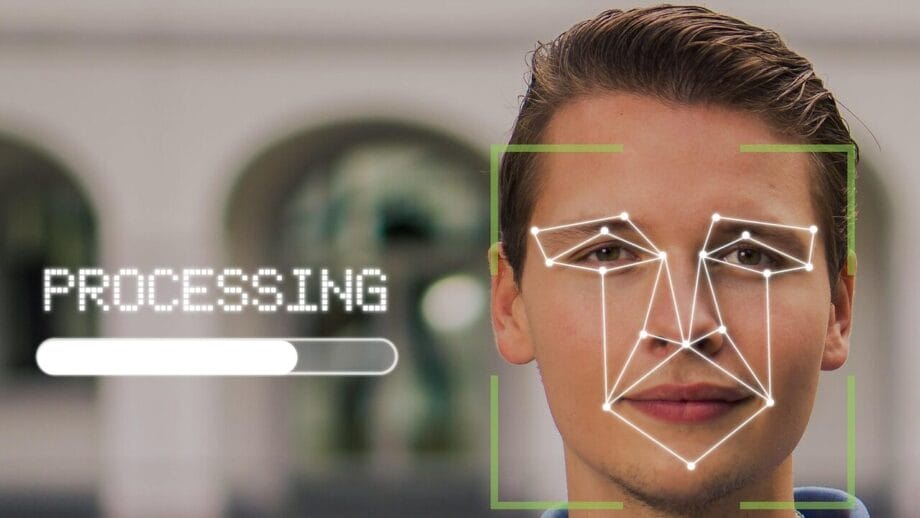U.S. Expands Facial Recognition Technology for Non-Citizens at Land Crossings, Airports, and Seaports
Published on October 29, 2025
The United States government has initiated a pivotal enhancement to its facial recognition technology aimed at non-citizens entering and exiting the nation.
This initiative forms part of a broader strategy under the Trump administration to fortify immigration regulations, mandating facial recognition scans for travelers traversing American land borders, airports, and seaports.
The Department of Homeland Security (DHS) has recently issued a final rule in the Federal Register, affirming the implementation of facial recognition technology to monitor the movement of non-citizens with greater precision.
According to the new rule, U.S. Customs and Border Protection (CBP) will now capture images of all non-citizens entering and exiting the United States. This innovative technology will facilitate the comparison of live photographs with those stored in travel documents or prior entries.
The overarching aim of this advancement is to bolster American border security, ensuring accurate identification of individuals at every entrance and exit point.
This measure represents a concerted endeavor to harness sophisticated technology in the fight against illegal immigration, enforce visa stipulations, and accurately monitor foreign nationals within the U.S.
Facial Recognition: A Progressive Stance on Border Security
The extension of facial recognition technology highlights the latest progression in the U.S. government’s commitment to border control. Initiated in 2018, a voluntary facial recognition program was rolled out at select airports, primarily to oversee the departure of non-citizen passengers. The initiative has since been expanded to include certain land and seaport crossings.
This latest regulation enforces that all non-citizens—regardless of their means of travel—must undergo mandatory facial scans upon entering or exiting the country.
This applies to both foreign nationals possessing visas and participants of the Visa Waiver Program (VWP). Importantly, U.S. citizens will not be subject to this requirement.
The facial recognition process at border points will function as a secondary layer of security, augmenting conventional identity verification methods.
Photographs obtained will be cross-referenced with existing passport images or recorded immigration histories to authenticate identities and avert fraudulent activity.
Aims and Objectives: Strengthening Immigration Control
The primary intention behind the augmentation of facial recognition technology is to enhance the U.S. government’s capacity to enforce immigration protocols and maintain stricter oversight over entries and exits.
The Trump administration has prioritized the prevention of illegal immigration, the reduction of visa overstays, and the assurance that only authorized individuals are permitted to reside in the United States.
These new border security measures aim to:
- Combat Illegal Immigration: By leveraging facial recognition technology, government authorities aspire to monitor the movements of foreign nationals and ensure adherence to visa conditions or other travel approvals.
- Prevent Fraudulent Travel: Biometric technology is designed to mitigate identity fraud risks, ensuring travelers are accurately identified.
- Enhance Efficiency at Border Crossings: The automation offered by this technology is poised to expedite the traveler processing paradigm, reducing wait times and amplifying border security efficacy.
- Enforce Visa Compliance: Expanded use of facial comparison technology will assist in overseeing visitors who may overstay their visas or violate immigration protocols, providing law enforcement with real-time data regarding travelers’ movements.
Controversy and Privacy Concerns
Though the initiative to broaden facial recognition usage is perceived as a vital transition toward reinforced border control, it has ignited apprehensions among privacy advocates. Critics contend that the compulsory collection of biometric data may infringe upon personal privacy rights, particularly if mishandled or misappropriated.
Key concerns include:
- Data Privacy: The extensive collection of facial recognition data raises alarms about potential breaches of personal information. Advocates worry about the protocols surrounding data storage, access, and duration of retention.
- Surveillance: The widespread deployment of facial recognition technology could culminate in heightened monitoring of travelers, inciting fears of a burgeoning “surveillance state” and its ramifications for civil liberties.
- Accuracy and Bias: Issues regarding the precision of facial recognition technology, particularly in identifying individuals from diverse racial or ethnic backgrounds, have been highlighted. Detractors argue that this widespread implementation could result in false identifications or disproportionate scrutiny of specific communities.
In response to these concerns, the Department of Homeland Security and U.S. Customs and Border Protection have reiterated their commitment to the responsible application of this technology within the framework of privacy legislation.
The facial recognition data will be utilized strictly for border security objectives, with the program subjected to continual assessments to gauge its effectiveness and privacy implications.
Looking Ahead: The Future of U.S. Border Control
The rollout of comprehensive facial recognition technology signifies the increasing prominence of biometrics in travel and immigration domains. As the U.S. government continues to refine its border security strategies, the role of facial recognition is anticipated to become increasingly pivotal in processing travelers at points of entry.
Looking forward, it appears that other nations may emulate similar technologies as integral components of their own border security frameworks.
A growing global trend toward the deployment of biometrics for immigration purposes is evident, with countries such as the United Kingdom, Australia, and Canada already implementing various forms of biometric screening at their borders.
For international travelers, the integration of facial recognition could translate into expedited processing at entry and exit points, albeit with a heightened requirement for awareness regarding the utilization of biometric data.
While some may appreciate the convenience, others could express discomfort regarding the extensive management of their personal information during international travel.
Conclusion: A Balancing Act Between Security and Privacy

The expansion of facial recognition technology at the U.S. borders signifies a notable shift in the approach to border security and immigration regulation.
Although designed to bolster security and regulate illegal immigration, it concurrently raises pivotal inquiries regarding privacy, data protection, and the consequences for civil liberties.
As the United States advances with this technology, finding an equilibrium between enhancing security and protecting individual privacy will be paramount.
The future of international travel may be undeniably influenced by the greater adoption of biometric screening, and the manner in which it is implemented will likely set precedents for countries worldwide.
Source link: Travelandtourworld.com.






